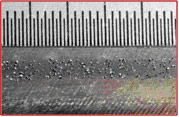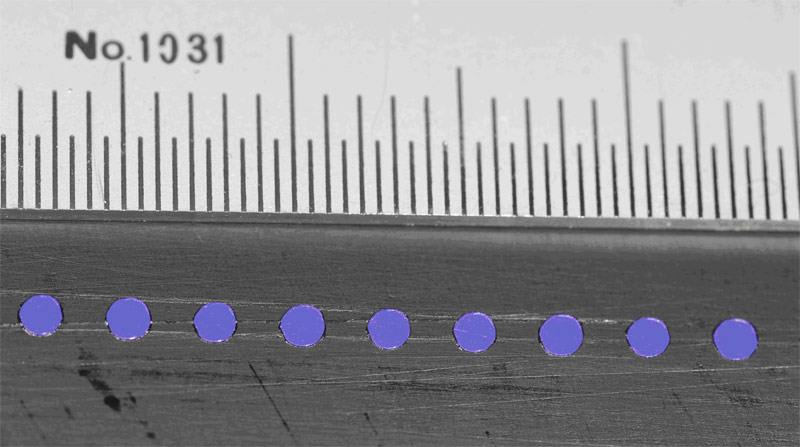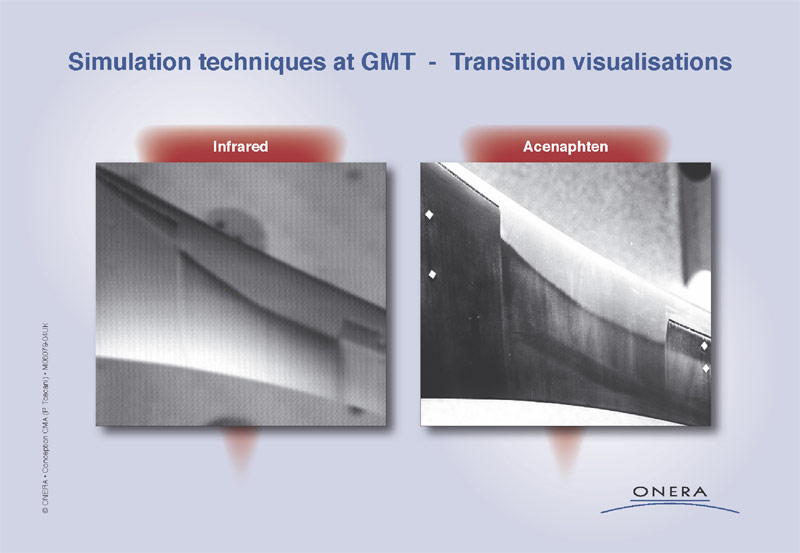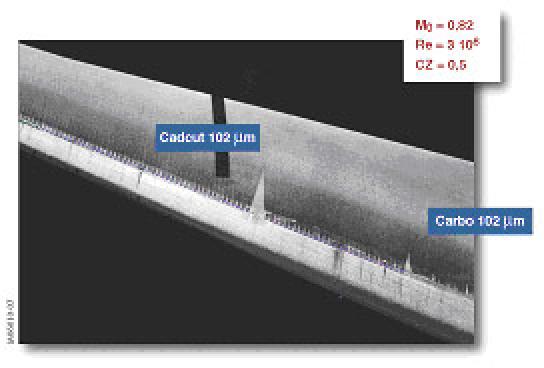- ONERA
- Wind Tunnels
- Testing techniques
- Transition tripping and visualization
Transition tripping and visualization
Wind tunnel is limited in size and stagnation pressure by power requirements. Consequently, many model tests are made in wind tunnels at Reynolds number well below those of the full scale aircraft or missile. At the full scale Reynolds number, it is likely that the boundary layers will be turbulent, whereas tests may be conducted on models with laminar boundary layer. So, it is necessary to create transition by some device and so obtain a turbulent boundary layer.
Two technologies are used in Onera wind tunnel to have a transition on model:
- Carborundum: small particles of carborundum are stick on the model
- Adhesive strips "Cadcut"
A "Cadcut" strip consists of an adhesive band on which dots (diameter 1.27 mm) are precut by laser at regular intervals (step = 2.54 mm). Setting up the transition on the model takes place simply, by removing the strip after having glued it, dots remaining in place.
Triggering using a Cadcut strip is quite comparable to that obtained using carborundum, with many advantages including the simplicity, speed and consistency of application, and a better monitoring of transition degradation. The heights of the dots available on the market, from 79 µm to 252 µm, cover most of the needs that occur in testing, except for the smallest heights.
Now, Cadcut usage on a routine basis within ONERA Wind Tunnel Division.
Transition visualization
2 different technologies for transition visualization are available in ONERA wind tunnels:
Infrared measurement
The first campaign which used infrared thermography to detect the boundary layer transition on an isolating model was carried out in 1987; this technique has been used many times since then.
Using an infrared camera, it was observed that the nature of the boundary layer could be constantly observed with no need for creating a thermal disequilibrium in the wind tunnel.
Complementary tests demonstrated that this technique could also be directly used on a model painted with Pressure-Sensitive Paint, which allowed the observation of both the pressure field and the boundary layer transition during the same test.
Hardware available :
- 1 Infrared camera - test with 4 simultaneous cameras demonstrated (laminar tests),
- 1 Inframetric camera (for acenaphten technique),
- 1 AGEMA 880 LWB camera (available lens 7°, 12° and 20°).
Acenaphten visualization
Technique for natural transition identification, or tripping efficiency check (Mature and available in any wind tunnels).




